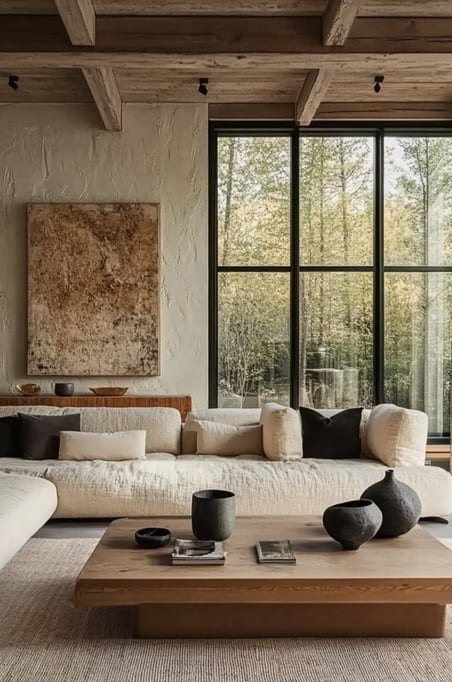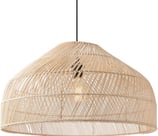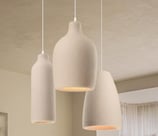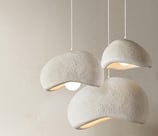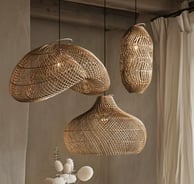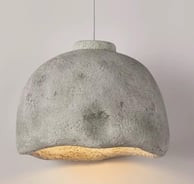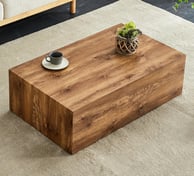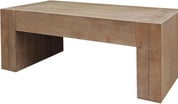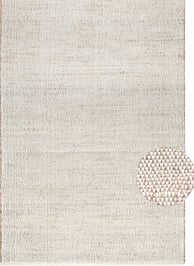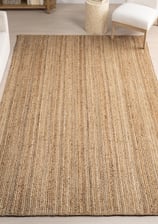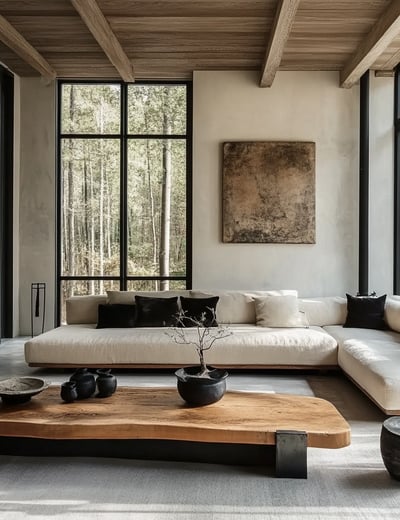How to Create a Wabi Sabi Living Room
Embrace Imperfection & Tranquility at Home
DECOR
AURACANVA
4/22/2025
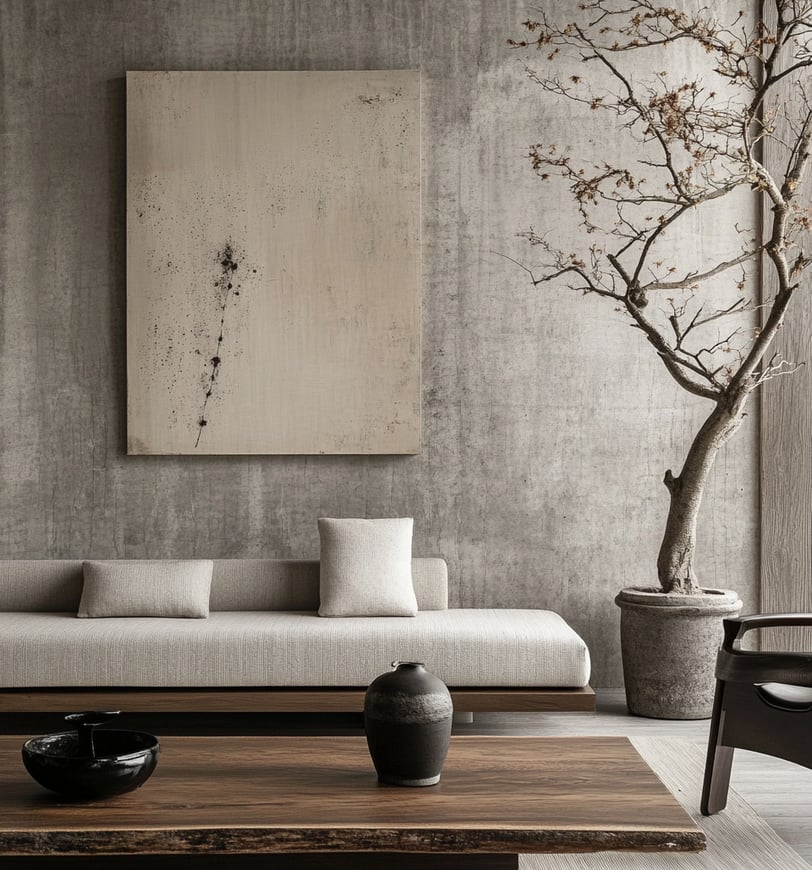

How to Create a Wabi Sabi Living Room:
Embrace Imperfection & Tranquility at Home
What Is Wabi Sabi Interior Design?
A wabi sabi living room captures the essence of Japanese interior design by celebrating imperfection, impermanence, and authenticity. If you're craving a minimalist living room with natural light, organic materials, and a sense of soulful imperfection, this guide strips it down to what matters. No fluff. Just real, actionable strategy to design a modern wabi-sabi space that feels grounding and elevated.
----- Disclosure: This post contains affiliate links and may feature ads. As an Amazon Associate, I earn from qualifying purchases. -----
🌾 1. Raw, Earthy Wall Texture
To anchor the aesthetic, start with textured plaster walls. Use limewash, clay plaster, or mineral-based wall paint to introduce natural depth and movement. These materials not only provide an earthy interior paint look, but also age beautifully — a key tenet of wabi-sabi philosophy.
Top picks include Portola Paints' Roman Clay or JH Wall Paints' mineral finishes — both widely used in Japandi living room designs and luxury minimal homes.


🛋️ 2. Low-Profile, Modular Seating
Trade in oversized sofas for modular low seating. Go with Japandi-style sectional sofas or built-in bench seating with clean lines and low profiles. Upholstery in raw canvas, cotton-linen, or washed hemp in earth tone shades (like sand, taupe, or stone) keeps things calm and cohesive.
This type of minimalist floor seating promotes a grounded, open space — the essence of mindful living room design.
💡 3. Natural Fiber + Textured Pendant Lighting
Lighting in a wabi-sabi living room should be both sculptural and subtle. Choose a boho woven pendant light made from rattan, bamboo, or seagrass to bring warmth and softness into the space. These materials add natural shadow play and earthy character.
For a more grounded or modern edge, go with rustic pendant lights in textured clay, raw ceramic, or concrete finishes. These materials bring a tactile imperfection that complements the raw walls and low-slung seating.
Whichever you choose, suspend it low and centered above the coffee table or lounge zone. The goal is ambient, not overpowering — light that feels like part of the space, not a spotlight on it.


🪵 4. Light, Organic Wood Accents
Incorporate Japandi wood furniture in light oak, birch, or ash with a matte finish. Skip anything lacquered or overly polished. Look for pieces that showcase raw grain, organic shapes, and softened edges — like a natural wood coffee table or Scandinavian rustic stools.
This adds warmth while preserving the uncluttered energy of a neutral living room aesthetic.


🧺 5. Layered Floor Elements
Start with a natural fiber rug — jute, hemp, or sisal. Then, layer in a neutral woven throw rug for texture. Use woven poufs, floor cushions, or even a tatami mat for casual, flexible seating that encourages grounding.
It’s all about layered neutral rugs that feel inviting and unforced.


🎨 7. Imperfect, Organic Wall Art
Skip traditional framed prints and opt for organic wall art that reflects the essence of impermanence. Think: abstract ink brushwork, handmade paper wall hangings, textile fragments, or neutral-toned canvases with textured surfaces.
Ceramic wall sculptures, driftwood pieces, or vintage calligraphy scrolls also align with the wabi-sabi art aesthetic — raw, grounded, and deeply human. Mount them asymmetrically or let them stand alone for visual breathing space.
Avoid symmetry, bold colors, or glossy finishes. Let your wall art feel like an extension of nature and time.
☁️ 8. Flood the Room With Natural Light
If you’re lucky enough to have large windows, let the outdoors in. Skip heavy curtains. Let shadows dance across the walls throughout the day — a dynamic element of natural interior design that softens and shifts with time.
This not only enhances your earth tone living room, but reinforces wabi-sabi’s core principle: impermanence is beautiful.
Final Thought
Wabi-sabi isn’t about creating a perfect room. It’s about intentional imperfection, warmth, and living in rhythm with nature. When you focus on texture over trend, presence over polish, your living space becomes more than aesthetic — it becomes sanctuary.









